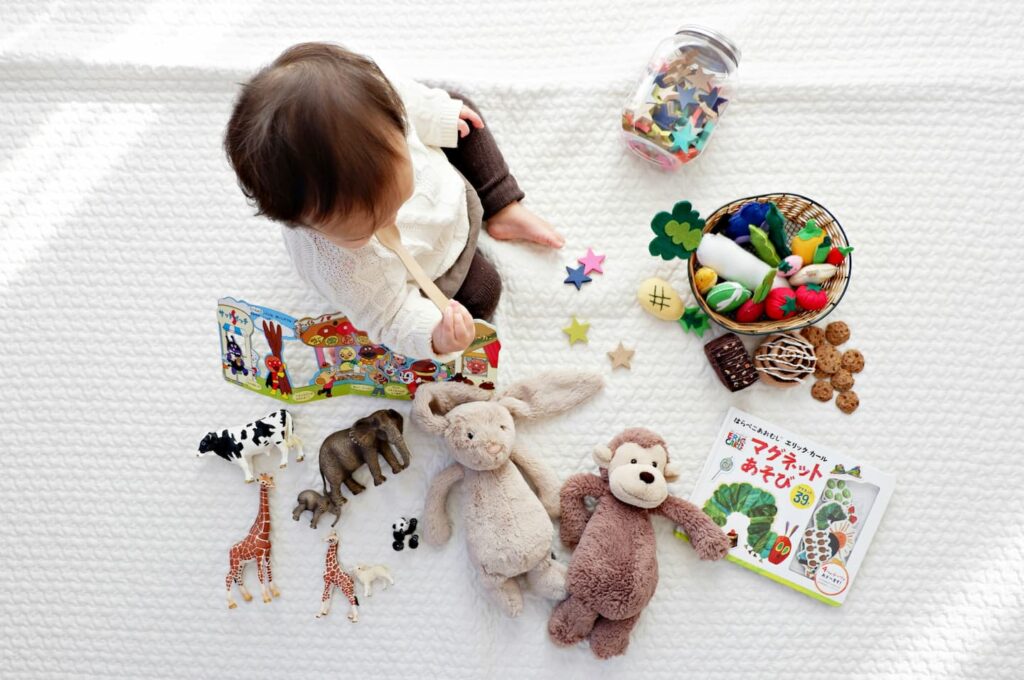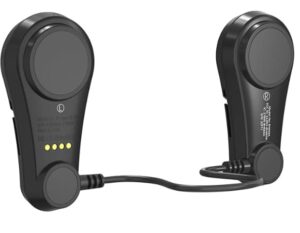Babies are constantly playing, when they aren’t eating, pooping, or sleeping. Play is how they learn. And they learn via their senses. They look at things, they touch them, and of course, they suck them. Sensory toys are the best types of toys for babies- why else are baby rattles such a common toy? Here’s how sensory toys are helpful for babies.

Many parents worry their babies aren’t getting enough developmental stimulation. Without the right toys, infants may miss critical sensory experiences. Sensory toys provide essential stimulation, enhancing healthy sensory and cognitive growth.
Sensory toys are specially designed toys aimed at stimulating a baby’s senses—touch, sight, hearing, taste, and smell. They enhance early childhood development, help build brain connections, and support cognitive and motor skill advancement from birth onwards.
Knowing the benefits of sensory toys is just the beginning. Understanding how and when to use them effectively is equally important. Let’s explore further.
Why are sensory toys important for newborn development?
Parents often worry their newborns aren’t interacting enough to support healthy development. Without suitable stimulation, essential developmental milestones could be delayed. Introducing sensory toys helps infants actively explore their environment, supporting neurological and physical growth.
Sensory toys offer crucial sensory input, promoting sensory perception, cognitive processing, and fine motor skill development. Research confirms sensory play in early infancy helps build neural pathways vital for cognitive and physical development. Using sensory toys consistently ensures comprehensive developmental progress right from birth.
At what age should you introduce sensory toys to your baby?
Parents frequently feel uncertain about the right time to introduce sensory toys. Delaying or starting too early might affect the effectiveness of sensory play. The optimal strategy is to introduce appropriate sensory toys from birth, adapting the toys to match your baby’s developmental stage.
You can safely begin sensory play from day one using visually stimulating toys and gentle textures. Around three months, introduce toys that encourage interaction, like rattles or textured books. Starting sensory play early and adjusting the complexity ensures maximum developmental benefits.
How do I choose the best sensory toys for my baby?
Choosing suitable sensory toys can feel overwhelming for new parents. Poor selections might fail to engage babies or even pose safety risks. The solution is to prioritize toys based on safety, developmental appropriateness, material quality, and sensory engagement.
Look for toys labeled as non-toxic, BPA-free, and compliant with safety standards such as ASTM or CPSIA. You can consider trusted options like baby sensory toys from Tumama kids, designed with both safety and development in mind.
For newborns, soft textures and high-contrast visuals are ideal. From six months onward, interactive toys with lights, sounds, and textures significantly enhance sensory and cognitive development, ensuring safe, effective stimulation.
Are sensory toys safe for babies to put in their mouths?
Babies naturally explore objects by mouthing them, leading parents to worry about toy safety. Low-quality materials can introduce hazards like choking or harmful chemicals. High-quality sensory toys specifically designed for oral exploration are safe, non-toxic, and beneficial for development.
Ensure sensory toys are certified safe, free from BPA, phthalates, lead, and other toxins. Teethers or sensory exploration toys explicitly made for oral stimulation are recommended. Choosing these toys ensures safety while satisfying your baby’s natural need for sensory exploration through mouthing.
How often should I let my baby play with sensory toys?
Parents often fear sensory overstimulation or under-stimulation. Incorrect frequency can limit the developmental benefits of sensory toys. Regular, brief sensory play sessions several times daily provide optimal sensory stimulation without overwhelming your baby.
Short play sessions, around 10-15 minutes each, multiple times per day, encourage consistent sensory, cognitive, and motor skill growth.
Pay close attention to your baby’s cues and adjust frequency based on their engagement and comfort, maximizing developmental benefits without causing sensory fatigue.
Conclusion
Sensory toys significantly enhance babies’ sensory, cognitive, and motor development. Choosing safe, age-appropriate sensory toys and regularly incorporating them into playtime supports optimal growth and healthy sensory exploration from infancy onwards.





